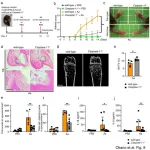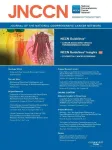(Press-News.org) PROVIDENCE, R.I. [Brown University] — When overdose rates spiked in Oregon in 2021 after the state decriminalized low-level drug possession, blame quickly turned to the new state law. But a new study by researchers at the Brown University School of Public Health implicates another factor: the introduction of fentanyl into Oregon’s unregulated drug market.
“What's compelling about this analysis is that it follows the path of fentanyl across the country and offers testament to the destruction wreaked by this highly potent drug,” said study author Brandon del Pozo, an assistant professor of medicine (research) and health services, policy and practice (research) at Brown. “When fentanyl arrives in Oregon in early 2021, we can see from the data that it wreaks destruction there, too. That was also when decriminalization was taking effect in Oregon.”
With the implementation of Measure 110 in 2021, Oregon became the first U.S. state to decriminalize small amounts of any drug for personal use. In April 2024, in reaction to the state’s skyrocketing overdose rate and other concerns, Oregon’s governor signed into law a bill that rolled back Measure 110 by making “personal use possession” a misdemeanor punishable by up to six months in jail.
Del Pozo said that there hasn’t been an analysis of the association of Measure 110 with overdose mortality that has fully accounted for the introduction of fentanyl to Oregon’s unregulated drug market, despite the fact that fentanyl is known to be the prime driver of fatal overdose in the U.S.
In the paper, published in JAMA Network Open, del Pozo and his team evaluated the association between changes in state fatal drug overdose rates and the escalation of fentanyl availability across the country from 2008 to 2022.
Comparing Oregon to 48 U.S. states as well as Washington, D.C., that did not decriminalize drug use, they analyzed national data from state drug laboratories showing what kinds of illicit drugs were being recovered and tested. They focused on the percentage of the drug supply accounted for by fentanyl and its analogs, which increased state by state over time. The researchers then plotted this data against publicly available information from the U.S. Centers for Disease Control of each state’s fatal drug overdoses.
They found that across all states, an increase of fentanyl in the illicit drug supply was strongly correlated with an increase in drug overdose fatalities.
“It was a very tight relationship: the more fentanyl that was recovered and tested by the state, the higher the fatal overdose rate in that state,” del Pozo said.
The researchers determined the inflection point when each state experienced a rapid escalation of fentanyl in its unregulated drug market, making it the dominant illicit opioid in that state. For Oregon, that change took place in the first half of 2021. M110 took effect in February 2021.
“It was very unfortunate timing, because it means the effects of decriminalization were confounded by an event — fentanyl supply shock — that dramatically drives up fatal overdose, state by state, as it occurs,” del Pozo said.
The researchers used the data to construct a model that determined the decriminalization of drug possession in Oregon was not associated with an increase in fatal drug overdose rates in the two years after its enactment. They concluded that when evaluating the effect of public policies on overdose mortality, it is critical to account for the role of fentanyl as the principal driver of the nation’s overdose mortality epidemic.
“If we’re not modeling fentanyl’s effects on a community when we’re talking about strategies to address the overdose crisis, then we’re not following the evidence,” del Pozo said.
The change in Oregon’s drug policies that reversed Measure 110 and recriminalized drug possession took place on Sept. 1, 2024.
The study reported in this press release was funded by the National Institute on Drug Abuse, part of the National Institutes of Health, with additional support from NIH’s National Institute of General Medical Sciences, under award numbers K01DA056654 and P20GM125507. The content is solely the responsibility of the authors and does not necessarily represent the official views of the National Institutes of Health.
END
Study shows fentanyl’s role in Oregon overdose spike after policy decriminalizing drug possession
A study by public health researchers at Brown University found that decriminalization of drug possession was not associated with an increase in fatal drug overdose rates in Oregon.
2024-09-05
ELSE PRESS RELEASES FROM THIS DATE:
Vision impairment and the population attributable fraction of dementia in older adults
2024-09-05
About The Study: The population attributable fraction of dementia from vision impairments ranged from 4.9%-19.0%. While not proving a cause-and-effect relationship, these findings support inclusion of multiple objective measures of vision impairments, including contrast sensitivity and visual acuity, to capture the total potential impact of addressing vision impairment on dementia.
Corresponding Author: To contact the corresponding author, Jason R. Smith, ScM, email jsmit491@jhu.edu.
To access the embargoed study: Visit our For The Media website at this link https://media.jamanetwork.com/
(doi:10.1001/jamaophthalmol.2024.3131)
Editor’s ...
Balloon angioplasty vs medical management for intracranial artery stenosis
2024-09-05
About The Study: In patients with symptomatic intracranial atherosclerotic stenosis, balloon angioplasty plus aggressive medical management, compared with aggressive medical management alone, statistically significantly lowered the risk of a composite outcome of any stroke or death within 30 days or an ischemic stroke or revascularization of the qualifying artery after 30 days through 12 months. The findings suggest that balloon angioplasty plus aggressive medical management may be an effective treatment for symptomatic intracranial atherosclerotic stenosis, although the risk of stroke or ...
Cannabis laws and utilization of medications for the treatment of mental health disorders
2024-09-05
About The Study: This cross-sectional study of commercially insured patients suggests that there may have been meaningful heterogeneous associations between cannabis policy and state and between cannabis policy and drug class (e.g., decreases in dispensing of benzodiazepines but increases in dispensing of antidepressants and antipsychotics). This finding suggests additional clinical research is needed to understand the association between cannabis use and mental health. The results have implications for patient substance use and mental health–related outcomes.
Corresponding Author: To ...
New avenues for treating heart failure: uncovering a protective mechanism in the cardiac myocytes
2024-09-05
Researchers from Tokyo Medical and Dental University (TMDU) identify Mst1–FoxO1–C/EBP-ß signaling pathway that promotes heart cell survival
Tokyo, Japan – Understanding the mechanisms behind cell death and survival is crucial when it comes to conditions like heart failure, which affects millions of people worldwide. Now, researchers from Japan have identified a mechanism which protects cardiac myocytes against ischemia, or a lack of blood supply.
In this study published online on 25 July 2024 in Nature Communications, researchers from the Tokyo Medical and Dental ...
Shedding light on how oral bacteria can aggravate rheumatoid arthritis
2024-09-05
Tokyo Medical and Dental University (TMDU) researchers investigate the molecular mechanisms that link periodontal disease to rheumatoid arthritis
Tokyo, Japan – Periodontal disease, which affects the gums and tissues that surround the teeth, is one of the most prevalent dental conditions worldwide. Most often caused by the formation and accumulation of bacterial biofilm around the teeth, periodontal disease can ultimately lead to tooth loss if left unattended. Interestingly, the inflammatory effects of periodontal bacteria can go well beyond the mouth, leading to systemic effects. Over the past few decades, clinical studies have revealed that the periodontal ...
Regenstrief to host semiannual LOINC® conference in Washington, D.C., Sept. 17-20
2024-09-05
Regenstrief Institute will host its semiannual LOINC® conference September 17-20, 2024, in Washington, D.C.
LOINC, a global healthcare terminology standard, will be the subject of the three-day conference during which experts worldwide will collaborate during presentations across three points of emphasis: implementation and policy, innovation and mapping.
Keynote presenters will be:
Wednesday, September 18 – Jesse Ehrenfeld, M.D., MPH, the president of the American Medical Association.
Thursday, September ...
Cause, potential treatments ID'd for persistent COVID-19 lung problems
2024-09-05
Arthritis drugs already available for prescription have the potential to halt lingering lung problems that can last months or years after COVID-19 infections, new research from the University of Virginia School of Medicine and Cedars-Sinai suggests.
By examining damaged human lungs and developing an innovative new lab model, the scientists identified faulty immune processes responsible for the ongoing lung issues that plague an increasing number of people after they’ve otherwise recovered from COVID-19. These lasting harms of COVID infection, ...
Pregnant women exposed to PFAS may be at risk for obesity, heart disease later in life
2024-09-05
WASHINGTON—Women with higher levels of per- and polyfluoroalkyl substances (PFAS) during pregnancy may experience long-term weight gain and heart problems later in life, according to new research published in The Journal of Clinical Endocrinology & Metabolism.
PFAS are manmade chemicals found in food packaging, cookware, clothes, drinking water, personal care products and many other consumer goods. These endocrine-disrupting chemicals (EDCs) can interfere with hormones and cause health issues such as obesity, infertility and cancer.
“Our study supports the idea that pregnancy may be ...
Skin fungus colonization accelerates breast cancer tumor growth
2024-09-05
Washington, D.C. — A common skin fungus, Malassezia globosa may invade deep tissues through the skin or by other means, then cause tumor growth, according to a new study. The study results were reported in mBio, an open access journal of the American Society for Microbiology.
“It is important to take care of skin not only for beauty, but also for health,” said corresponding study author Qi-Ming Wang, Ph.D., a professor in the School of Life Sciences, Institute of Life Sciences and Green Development, Hebei University, Hebei, China. “As ...
New study in JNCCN supports chemotherapy option that reduces side effects for people with gastrointestinal cancers
2024-09-05
PLYMOUTH MEETING, PA [September 5, 2024] — New research just-published online by JNCCN—Journal of the National Comprehensive Cancer Network finds that for many commonly used treatment regimens targeting metastatic gastrointestinal (GI) cancers, such as FOLFOX, FOLFIRI, or FOLFIRINOX, it is possible to administer 5-FU solely through continuous infusion, minus the bolus (quick-delivery via intravenous push) component, without negatively affecting patient outcomes.
The study reviewed results from 11,765 patients across 280 cancer clinics who were diagnosed with ...
LAST 30 PRESS RELEASES:
Eye for trouble: Automated counting for chromosome issues under the microscope
The vast majority of US rivers lack any protections from human activities, new research finds
Ultrasound-responsive in situ antigen "nanocatchers" open a new paradigm for personalized tumor immunotherapy
Environmental “superbugs” in our rivers and soils: new one health review warns of growing antimicrobial resistance crisis
Triple threat in greenhouse farming: how heavy metals, microplastics, and antibiotic resistance genes unite to challenge sustainable food production
Earthworms turn manure into a powerful tool against antibiotic resistance
AI turns water into an early warning network for hidden biological pollutants
Hidden hotspots on “green” plastics: biodegradable and conventional plastics shape very different antibiotic resistance risks in river microbiomes
Engineered biochar enzyme system clears toxic phenolic acids and restores pepper seed germination in continuous cropping soils
Retail therapy fail? Online shopping linked to stress, says study
How well-meaning allies can increase stress for marginalized people
Commercially viable biomanufacturing: designer yeast turns sugar into lucrative chemical 3-HP
Control valve discovered in gut’s plumbing system
George Mason University leads phase 2 clinical trial for pill to help maintain weight loss after GLP-1s
Hop to it: research from Shedd Aquarium tracks conch movement to set new conservation guidance
Weight loss drugs and bariatric surgery improve the body’s fat ‘balance:’ study
The Age of Fishes began with mass death
TB harnesses part of immune defense system to cause infection
Important new source of oxidation in the atmosphere found
A tug-of-war explains a decades-old question about how bacteria swim
Strengthened immune defense against cancer
Engineering the development of the pancreas
The Journal of Nuclear Medicine ahead-of-print tip sheet: Jan. 9, 2026
Mount Sinai researchers help create largest immune cell atlas of bone marrow in multiple myeloma patients
Why it is so hard to get started on an unpleasant task: Scientists identify a “motivation brake”
Body composition changes after bariatric surgery or treatment with GLP-1 receptor agonists
Targeted regulation of abortion providers laws and pregnancies conceived through fertility treatment
Press registration is now open for the 2026 ACMG Annual Clinical Genetics Meeting
Understanding sex-based differences and the role of bone morphogenetic protein signaling in Alzheimer’s disease
Breakthrough in thin-film electrolytes pushes solid oxide fuel cells forward
[Press-News.org] Study shows fentanyl’s role in Oregon overdose spike after policy decriminalizing drug possessionA study by public health researchers at Brown University found that decriminalization of drug possession was not associated with an increase in fatal drug overdose rates in Oregon.


